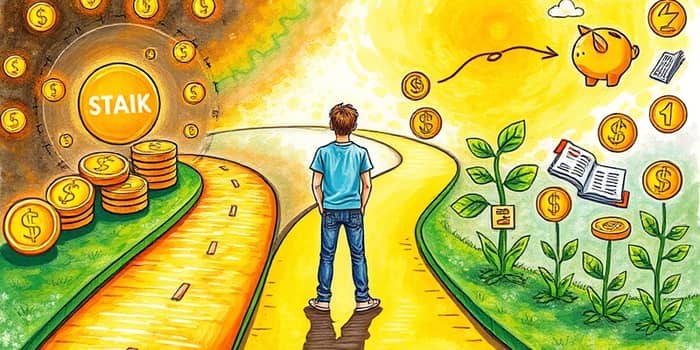
In a world driven by instant satisfaction and long-term goals, finding the middle ground between chasing rewards and maintaining financial health can be transformative. This article guides you through understanding your motivations, adopting proven practices, and building habits that last a lifetime.
Humans are naturally driven to pursue gains, whether financial or experiential. Immediate cash bonuses and promotions or non-financial benefits like recognition, social impact, and enhanced well-being can all act as powerful motivators. Investors, employees, and consumers alike chase these rewards hoping for fulfillment and growth.
Consider the evolution of U.S. bond returns: between 1996 and 2007, capital appreciation contributed just 14.6% to total returns, but from 2007 to 2017, it surged to 35.9% according to the Bloomberg Barclays U.S. Aggregate Bond Index. This shift illustrates how reward sources can change dramatically over time, shaping our expectations and strategies.
Post-pandemic trends reveal that younger generations, especially Millennials and Gen Z, value holistic reward packages: work-life balance and flexibility often outrank salary hikes. Companies now innovate benefit structures to include wellness programs, remote work options, and meaningful social initiatives alongside traditional bonuses.
At its core, financial responsibility means living within your means. Spending less than you earn, avoiding unnecessary debt, and preparing for unexpected expenses build a sturdy foundation for both personal satisfaction and lasting security.
Minimizing high-interest liabilities and focusing on necessary, strategic borrowing can save thousands of dollars over time. Responsible management of credit and debt ensures you remain in control, not at the mercy of compounding interest.
Resisting the instant gratification trap is easier said than done. Every spending decision involves a risk-reward assessment: buy that new gadget now or redirect the funds toward a high-yield investment? The answer often lies in disciplined long-term thinking.
Diversification is key. Distribute your investments across stocks, bonds, real estate, and alternative assets to smooth out volatility while still capturing growth opportunities. Aim for a balanced portfolio aligned with your risk tolerance, time horizon, and life stage.
Set clear, realistic goals. Identify both short-term milestones, like saving for a vacation, and long-term objectives, such as retirement or a down payment on a home. Regularly review your progress—monthly spending reports, quarterly portfolio check-ins—and adjust course when necessary.
Financial habits are often forged in childhood. Parents who assign age-appropriate allowances tied to chores provide experiential learning with money, teaching children the value of earning, saving, and spending wisely. Studies show that hands-on money management builds stronger self-efficacy and emotional well-being in adulthood.
Consider Emma, who at age 10 chose to save half of her weekly allowance toward a special bike purchase. By age 18, she had learned to delay gratification, budget effectively, and even invest small amounts in a custodial account. Today, she carries these lessons into her career and personal finances.
Open discussions about household budgeting demystify money. Let teens track family expenses or participate in grocery shopping with a spending limit. These experiences reinforce the consequences of choices and the rewards of disciplined saving.
For families, involve children in budgeting conversations. Assign minor responsibilities like tracking utility usage or calculating grocery costs. These small tasks cultivate financial literacy early and foster a sense of ownership.
Balancing the pursuit of rewards with responsible money management requires intention, education, and practical strategies. By differentiating wants from needs, resisting impulsive urges, and embedding healthy habits from a young age, you set the stage for long-term success and well-being.
Remember, every financial choice reflects your values and shapes your future. Embrace the journey of growth, adjust as life evolves, and celebrate milestones along the way. With discipline and vision, you can enjoy the best of both worlds: the thrill of rewards and the comfort of financial security.
References













